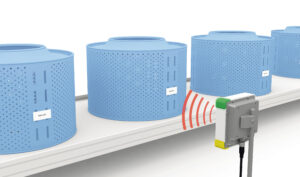In a world of inexpensive SBC’s (single board computers) and small microcontrollers, such as Arduinos, it has become extremely easy and affordable to tinker with many types of projects with a huge variety of cheap I/O components. But do these setups have a place in the industrial automation world? Well, it’s definitely worth taking a closer look.
Although many of these products mention their ability to be IoT (Internet of Things) nodes, you don’t necessarily have to be connected to the Internet for a solution to work. There are many open source software libraries out there that can be utilized to interface small projects to say Modbus, Profibus, Ethernet/IP, etc., which opens up the doors to communications with existing PLC’s. These small, but powerful, boards can have several I/O tied to them, and they even can be monitored and controlled via small displays and touchscreens. Granted, you more than likely will not be using ladder logic to program these applications, but there are many options for a variety of programming languages available. Using an industrial communications protocol as mentioned previously, a PLC could also be used to interface with the board or even control the I/O directly (as remote I/O). This opens up many possibilities, especially if you’re on a tight budget.
What if you just need a simple standalone application that requires no interface to the outside world at all? This is where these small gadgets could save you a great deal of money and still deliver the same results at a fraction of the cost. A perfect example would be for a pump application that would require level monitoring and possibly some other sensors such as discharge pressure. Maybe even a VFD with some PID control? Maybe you have some other I/O that would need to be monitored/controlled as well that would take it past the available I/O say on a single VFD or small PLC? Depending on the application, it might be a toss up in price, and the added learning curve for maintaining such a system might outweigh the actual hardware costs. These are items that must be addressed during the design phase, and it’s something to really take into consideration if you have more than one of these systems to install and maintain.
What about durability and reliability? How are these components supposed to compare to “industrial grade” components? Well, if you look at the specs on a lot of the inexpensive boards, many of them are similar to these other “industrial” products without the price tag. Of course, since many of these boards and their peripherals are not housed appropriately for an industrial environment, that’s easy enough to fix by providing a good NEMA rated enclosure for your particular application. Also, you would still want a good solid DC power supply that will power these systems. With a decent enclosure and power solution, these boards could run 24/7 for several years, and components would be cheap and easy to replace if necessary.
At PCA, we have started to provide solutions utilizing SBC’s and other microcontrollers in conjunction with new and existing industrial automation projects. In our next post, we will dig a bit deeper into an application that we developed utilizing an SBC as an “Industrial Communications Gateway”. Stay tuned!



